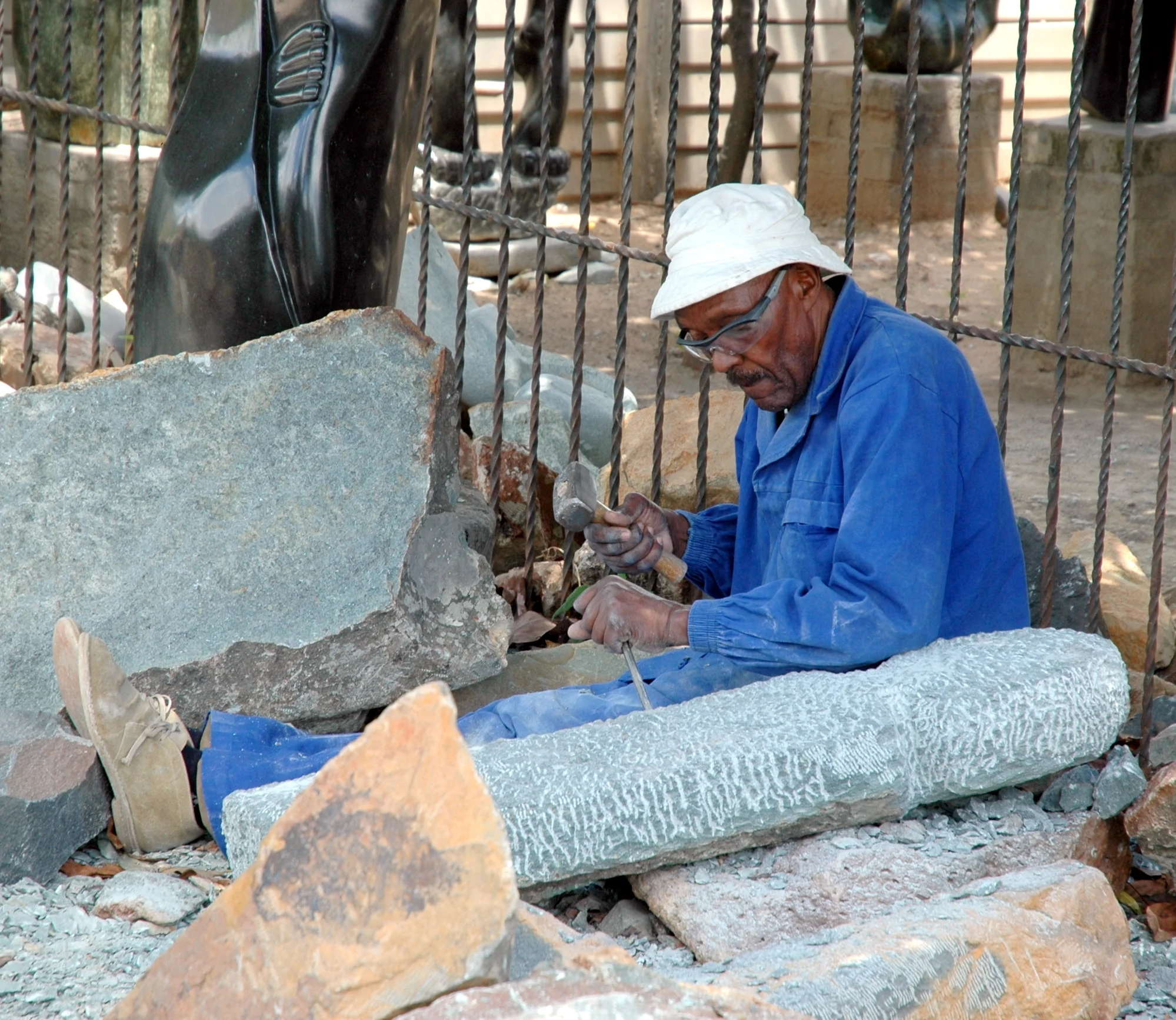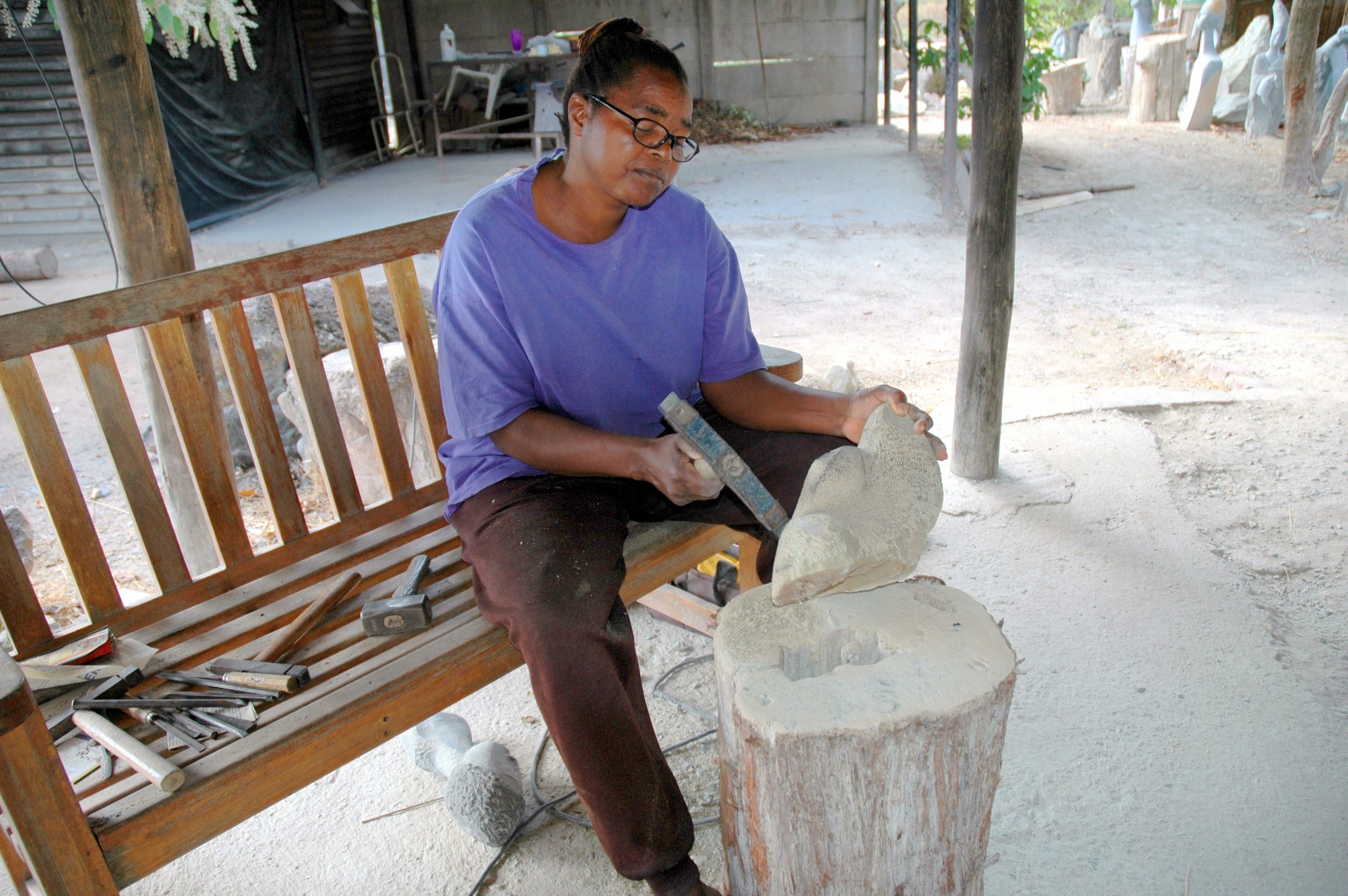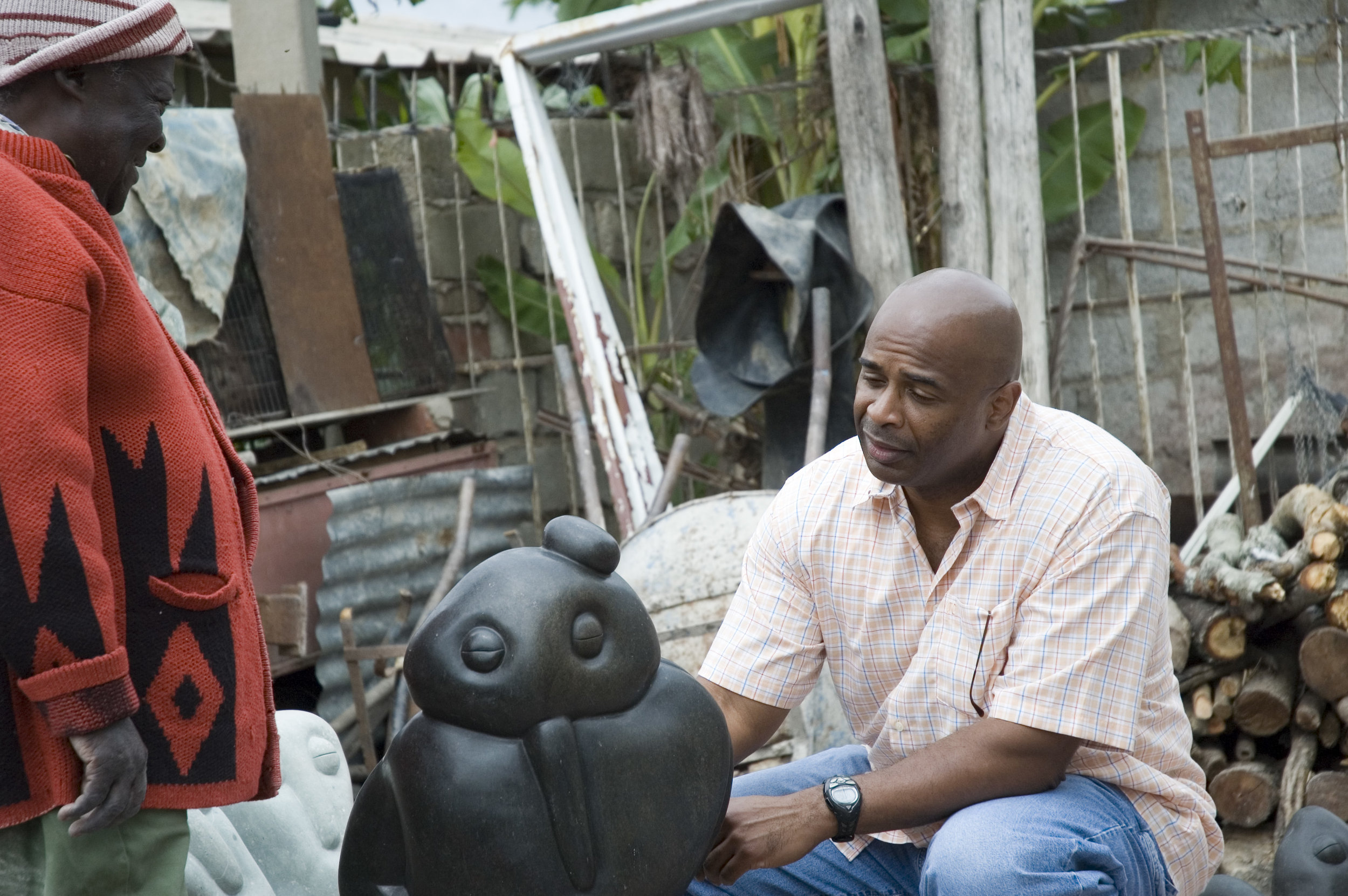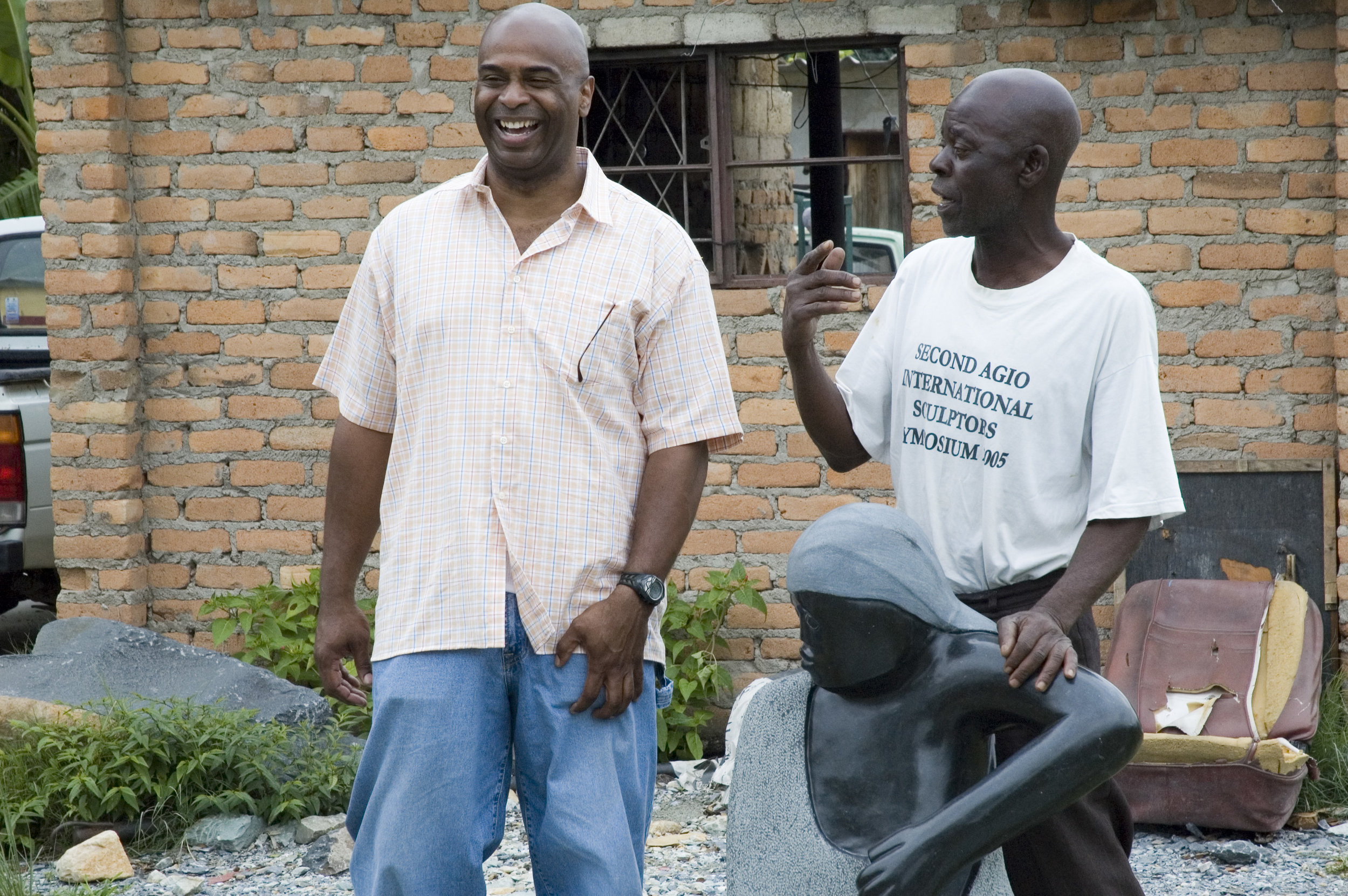Zimstone Gallery
Artwork from the African Diaspora
Grandparents in love
by Chiwawa
About us
At Zimstone Gallery, we are fully committed to providing a range of services to those we come in contact with. Whether it’s assisting an artist with the tools of their trade, or assisting our customers in purchasing art as an investment and commence their own private collection, we consider it a privilege to be able to present what we regard as one of life’s most remarkable opportunities.
We see it as an honor to travel to Zimbabwe to meet with some of the world’s most talented artists. We personally travel there and select works based on their beauty, value and cultural significance. We are humbled to have had the opportunity to meet with some of the last living first generation (pre-independence) master sculptors. These artists produce sculptures that demonstrate the resiliency of the human spirit and we have been fortunate to be able to present their remarkable talents. Our commitment to conducting business in a fair, equitable, and compassionate manner is fundamental to our mission.
Types of Sculpting Stones
Butter Jade It has a creamy yellow color with dark striations throughout and is sometimes also known as Butterstone. Although it is called 'Jade', it is not however a true Jade. The striations found in the attractive yellow-green sedimentary rock are actually layers containing fossilized algae. The stone is typically around 50 million years old and between 6 and 7 on Moh's hardness scale.
Colbat A beautiful stone often purple in colouration with a variation of yellow and white markings and strips throughout. Can often have brown/orange markings. Cobalt is a brittle, relatively rare hard metal, closely resembling iron and nickel in appearance. It has a hardness of between 5 and 6 on Moh's scale.
Fruit Serpentine It is usually a really colorful pretty stone, with deep veins of variated strata. Serpentine is the next hardest stone with a rating of 4.0-5.0 on Mohs hardness scale. Because of it's beauty and collectability it is one of the most sought after because of it’s fine finish, durability and hardness.
Leopard Rock A beautifully colored stone with spock marks similar to a leopard, hence the name, of yellow and black. Sometimes containing petrified wood.
Lepedolite An uncommon mica and has only in the past decade become available on the mineral market in large quantities. Lepidolite is an ore of lithium and forms in granitic masses that contain a substantial amount of lithium. The lithium content in lepidolite does vary greatly however and low lithium lepidolite is nearly useless as an ore of lithium. The typical violet to pink color of lepidolite is characteristic and is the only field test available to identify lepidolite from other micas. Lepidolite, like other micas, has a layered structure of lithium aluminum silicate sheets weakly bonded together by layers of potassium ions. These potassium ion layers produce the perfect cleavage. lepidolite crystals accompany such other lithium bearing minerals such as tourmaline, amblygonite and spodumene and can add greatly to the value of these specimens. A rock made of granular pink lepidolite and red to pink tourmaline is used as an ornamental stone for carving. Single large plates or "books" of lepidolite can have appealling violet color and make attractive mineral specimens.
Lepedolite An uncommon mica and has only in the past decade become available on the mineral market in large quantities. Lepidolite is an ore of lithium and forms in granitic masses that contain a substantial amount of lithium. The lithium content in lepidolite does vary greatly however and low lithium lepidolite is nearly useless as an ore of lithium. The typical violet to pink color of lepidolite is characteristic and is the only field test available to identify lepidolite from other micas. Lepidolite, like other micas, has a layered structure of lithium aluminum silicate sheets weakly bonded together by layers of potassium ions. These potassium ion layers produce the perfect cleavage. lepidolite crystals accompany such other lithium bearing minerals such as tourmaline, amblygonite and spodumene and can add greatly to the value of these specimens. A rock made of granular pink lepidolite and red to pink tourmaline is used as an ornamental stone for carving. Single large plates or "books" of lepidolite can have appealling violet color and make attractive mineral specimens.
Opal A beautiful light greenish serpentine. Opal stone is a very hard stone finely textured with an almost translucent surface sometimes specked with red, orange and bluish dots and patches. Opalstone is famous for it’s milky light colored greens and smooth texture. It is also unique in that it has fewer colour variations than Serpentine. It is also mined at Chiweshe, two hours north of Harare. This stone is one of the favourites of sculptors, as it’s not as hard as springstone and other serpentines, but still polishes to a high finish. Opalstone also has, at times, a brown color throughout the predominate green. The appearance can be smooth or mottled. As with most of the stones mined for the purpose of sculpting, opal is mined without the use of automotive tools. Lemon Opalstone is easily identified by contrasting yellow striations within the stone.
Rapoko Rapoko Stone is reddish brown in color. It is a much softer stone which makes it much easier to work with.
Serpentine A favorite among the carvers of Zimbabwe, who bring out the best in carvings from this stone. The detail achieved with this stone is exquisite. It is found in many deposits throughout Zimbabwe and comes in various colors, such as black & green serpentine with fleched and veined yellows, greens, goldens and greys, spots & patches of with earthy brown and red colored veinage, and opal-ites gives a huge scope of textures and colors to complement every form or image represented. Hardness level varies from very soft to vary hard. The majority of the sculptors today, however do not carve from soft serpentine, but rather select deposits of rock that are hard and therefore more durable. Black Iron Serpentine derives it’s name from the deposits of iron found in it and is one of the hardest and darkest stones found in Zimbabwe. It has the most amazing black lustress finish that resembles the black opal and is highly sought after because of it’s fine finish, durability and hardness.
Spring Stone A very pure hard variety of Serpentine, Known as Springstone. Springstone has a fine texture with no cleavages, is hard and firm thus offering a good resistance to the sculptor. Springstone is wrapped in an outer "blanket" of reddish brown oxidised rock. It emerges from the quarry like sculptures created by nature millions of years ago and is often a source of inspiration to the artist.
Verdite A green semi precious stone which is over 3500 million years old. The Zimbabwe Verdite is of uniquely high quality and no other deposit is of comparable value anywhere else in the world. Only the more experienced sculptor will dare sculpt from this hard stone. Its color is unique in that it boasts an Emerald looking quality with beautiful brown and green striations. Unfortunately, verdite is fast becoming rare and is difficult to find.which is why it is sought after by collectors and investors who have been quick to recognize it as an intrinsically valuable material. Because it is a quickly diminishing resource, passage of time can only enhance its attraction.








